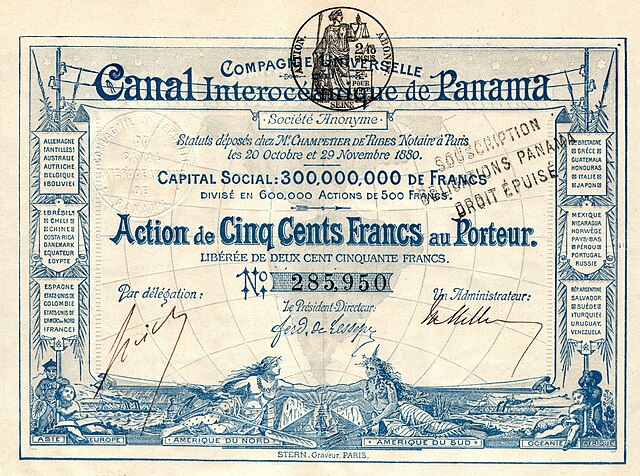The Panama Canal is an artificial 82-kilometre (51-mile) waterway in Panama that connects the Atlantic Ocean with the Pacific Ocean, cutting across the Isthmus of Panama, and is a conduit for maritime trade. Locks at each end lift ships up to Gatun Lake, an artificial fresh water lake 26 meters (85 ft) above sea level, created by damming up the Chagres River and Lake Alajuela to reduce the amount of excavation work required for the canal. Locks then lower the ships at the other end. An average of 200,000,000 L (52,000,000 US gal) of fresh water is used in a single passing of a ship. The canal is threatened by low water levels during droughts.
Share of the Compagnie Universelle du Canal Interocéanique de Panama, issued 29. November 1880 – signed by Ferdinand de Lesseps
Ferdinand de Lesseps, the French originator of the Suez Canal and the Panama Canal
Excavator at work in Bas Obispo, 1886
The US's intentions to influence the area (especially the Panama Canal construction and control) led to the separation of Panama from Colombia in 1903.
The Isthmus of Panama, also historically known as the Isthmus of Darien, is the narrow strip of land that lies between the Caribbean Sea and the Pacific Ocean, linking North and South America. It contains the country of Panama and the Panama Canal. Like many isthmuses, it is a location of great geopolitical and strategic importance.
An 1850 oil painting by Charles Christian Nahl: The Isthmus of Panama on the Height of the Chagres River
Francis Samuel Marryat, Crossing The Isthmus Of Panama, 1855






